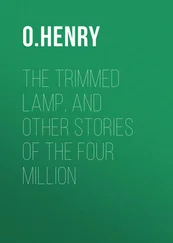Now is the time to pat himself on the back for having multiplied the interior spaces: their number allows for the satisfaction of different, even incompatible, tastes and proclivities: thus a penchant for modern, comfortable design, and even for avant-garde experiments (in moderation), need not preclude stateliness in the French or English manner, or medieval austerity, or the rustic simplicity of straw-seated chairs and camp beds. . All this is easier to say than to do, of course; but it’s a spur to ingenuity and inventiveness in furnishing.
The catalogs of the finest suppliers pile up on the priest’s desk, but he is not satisfied. Thonet, Chippendale, Jean-Michel Frank, and Boulle, launched on their elliptical orbits, converge and coincide, pursuing harmony in diversity. Antique dealers on three continents pack and dispatch their treasures. From the far end of a room, an Empire bed with golden lion’s feet responds to a heavy curtain of green velvet with crimson tassels. Wreathed in his tiny aura, a decorative, almost comic Ganesh in an Indian plaster relief presides over a large rug with blue djinns against a cream ground. The little Louis XV chairs and pedestal tables, so fragile, as if held up by a puppeteer’s invisible threads, welcome the florid morning light pouring in through the picture windows. . Gradually the house fills up, like a puzzle patiently assembled. There is a danger of ending up with something like a bazaar or a showroom. The priest is aware that he is subject to forces pulling in opposite directions: one toward diversity, to ensure that the future occupant, of whom nothing can be known since he doesn’t yet exist, will find some point or line to his taste; the other toward coherence, which is what will make the house an attractive whole. His best efforts are devoted to reconciling these demands, which is why he adopts a timeless design frame, somewhere between Victorian and art deco, within which striking or exotic touches will function as details: noticeable, pleasing, but also discreet.
Although he directs and oversees all of the work, and has the last word, he listens to his many helpers and takes their advice into account. Throughout the long days, he is accompanied by architects and designers, who stay on into the evening, chatting after dinner. He confides particularly in the cabinet-makers: rough tradesmen, and clearly very strong, but capable of an almost feminine delicacy and attention to detail in the exercise of their skills. He feels a secret affinity with them because, in his way, he too is creating a work, which although invisible for the moment will one day be as real and tangible as theirs: a man, a priest like himself, the long-anticipated one whose sanctity he is fashioning. He has come to love that man, almost to regard him as the son he will never have. He prefers not to think about the personal sacrifice he’s making for him, declining to do the good works required by his ministry, which would be such a balm to his soul: in a way he is doing them, although the effects are displaced and delayed.
The priest is disheartened to discover that the tradesmen and professionals working on the house have little regard for charity (although this opposition also spurs him on and reaffirms his convictions). For them it’s normal, and indeed entirely just, that he should build a luxurious mansion while neglecting to come to the aid of the needy. The way they see it, the poor deserve the conditions they live in, because they’re lazy or don’t even want to improve themselves; whatever you give them will only prolong their poverty. They’ve never known anything else, and they’re satisfied with what they know. In merely practical terms, without having to go into moral, historical, or sociological considerations, it’s obvious that poverty, especially in its extreme forms, is a phase that societies have to go through, and can’t simply be eliminated. Why even try? The poor live happily with their lacks, and don’t even see them as such.
The priest is strongly opposed to such an attitude: not only because of church policy, but also out of deep personal conviction. It’s his duty, he says, and the duty of all the fortunate, to do something to improve the lot of the dispossessed. They have to be saved from destitution in order to develop a sense of dignity and decency, which will serve as a basis on which to build the other virtues. His defense of this position is implacable; he’s not trying to impress his interlocutors, but he does, or at least reduces them to silence. Far from being a flight or a distraction from charity, his house is a monument to that queen and crown of divine virtues. It is designed to make charity perfect. In a way, it’s a practical, active monument, a silent, efficient machine for producing charity.
But these theoretical reflections become less frequent as the work of filling the house intensifies. As the pieces of furniture arrive, they occupy a provisional place before being shifted to another; their arrangements keep altering in a game of trial and error that resembles the evolution of species. The interior landscape is gradually stabilized. When the curtains are hung, it is as if light were being installed as well, in the form of weightless receptacles of air. Now the work continues into the night, with the hanging of chandeliers, the placement of candlesticks and lamps, the dance of the shadows renewing and transforming the beauties of the day.
The priest feels that the voyage to the center is accelerating when the household items, which he refers to humorously as the “party decorations,” begin to arrive in crates and containers, piling up like new pharaonic pyramids. Vases, tablecloths, paintings, tableware, ornaments. The systematic provision of wide variety continues. China and crystal alternate with rustic crockery, silver cutlery with dark bronze. There is a suitable cup or glass on a shelf somewhere for every conceivable hot or cold drink; there is a vase, Ming or other, to show every kind of flower to its best effect. Ostentation is, of course, to be avoided. But that’s tricky, because concealing it only magnifies the effect. The money spent so far, though it comes to a very large sum, is a trifle compared to what is yet to be spent on works of art: paintings by old masters, hung in elegant isolation, given places of honor, or almost hidden, as if the visitor were being invited to search them out; watercolors in certain bedrooms, delicate representations of plants, or seascapes, or mountains, or little household scenes from days gone by; old engravings; and the silent presence of sculptures, half hidden behind armchairs, illuminating a corner or setting off a view through open doors. The folding panels of the decorative screens, their movement stilled, burst with flowers, stags, or flying bodhisattvas.
The aesthetic aspect is no more than that: an aspect. And there are others to attend to: mattresses, bedclothes, heaters, cleaning equipment, supplies for the kitchens and the bathrooms. When the priest takes possession of a consignment of Brazilian soap, and runs his fingers along the edge of a cake, appreciating its verdant Amazonian smoothness, he feels that he is very close to that center where life is happening already. And he comes even closer when he puts bouquets of fresh flowers in the vases, and food in the pantry. . And closer still, or so he feels, when he begins to fill the library shelves. He doesn’t want his successor to subtract, for the purchase of books, so much as a peso from the funds to be used in fulfilling his sacred duty to assist the poor, so he buys enough reading material to last a lifetime. Choosing isn’t difficult: classics, encyclopedias, novels, poetry, history, science. Arranging the thousands of volumes, he loses himself in daydreams about the future reader, and as he anticipates his tastes, his interests, his progression from one book to another, his reactions to this or that novel, to a line from a favorite poet or a philosopher’s argument, he forms a clearer picture of the man for whom he is working, and feels that he can see him already, wearing the halo of sanctity prepared by his predecessor, adored by his parishioners upon whom he showers gifts of the purest, most abundant charity, keeping nothing back for himself (because all his needs have been met).
Читать дальше












